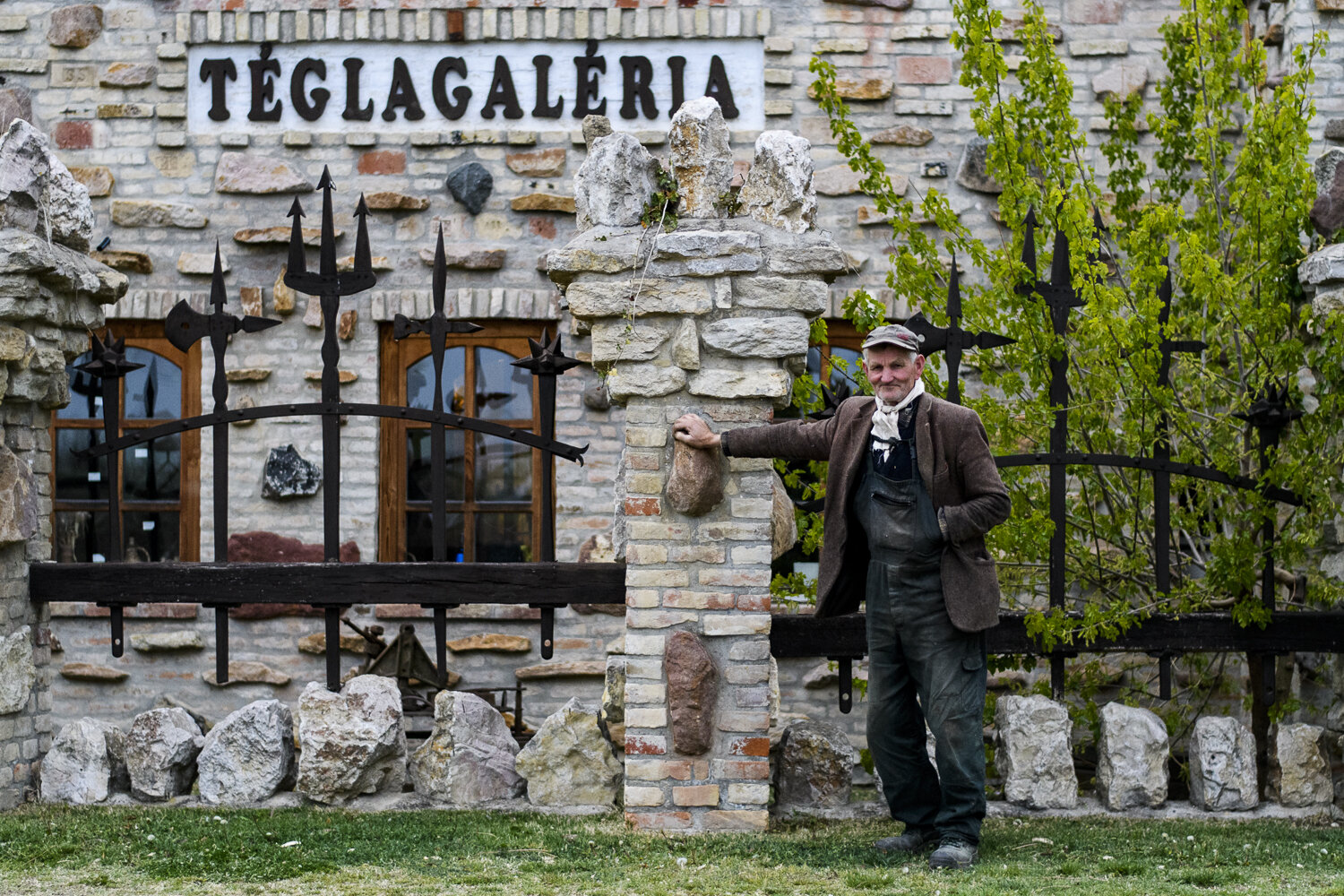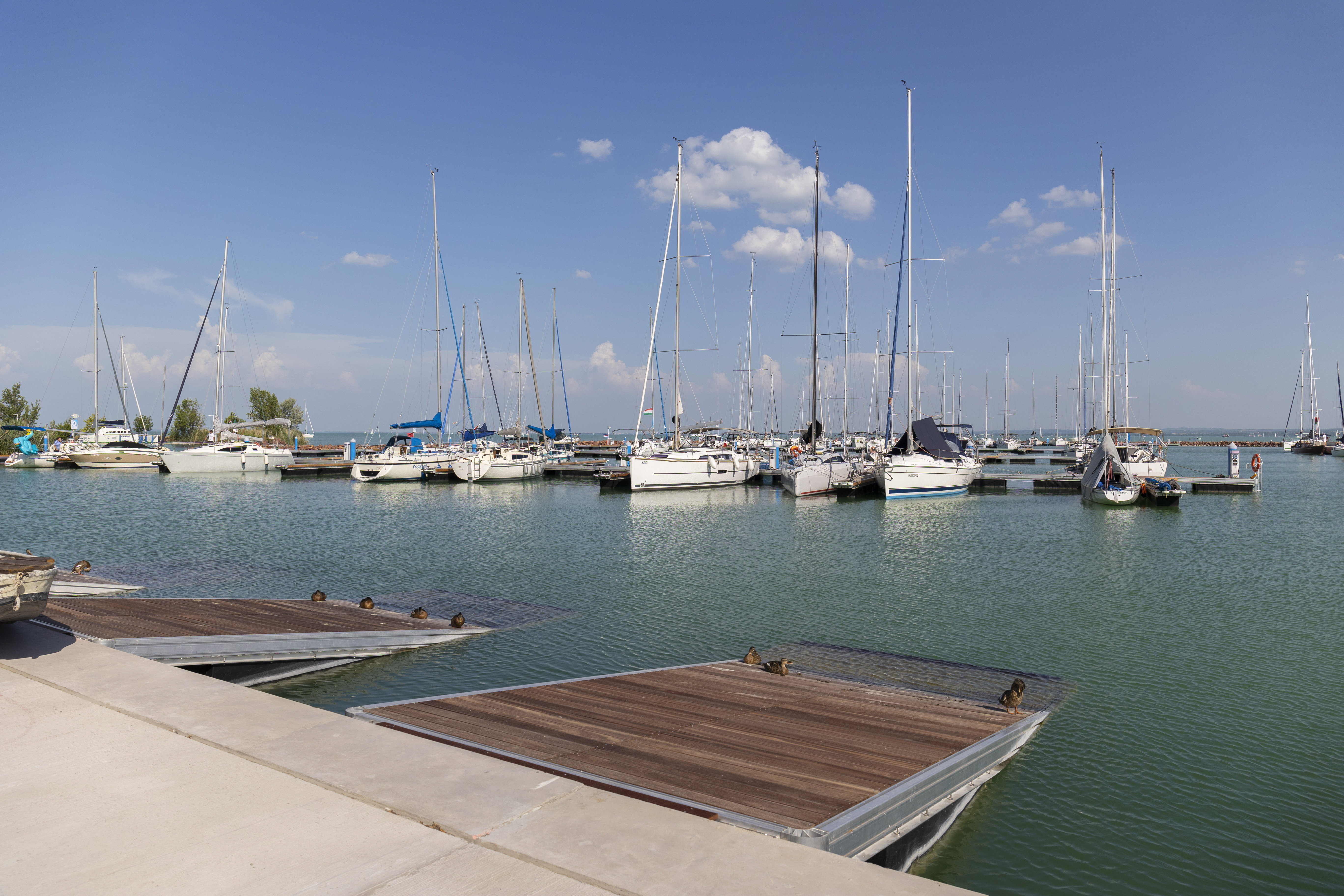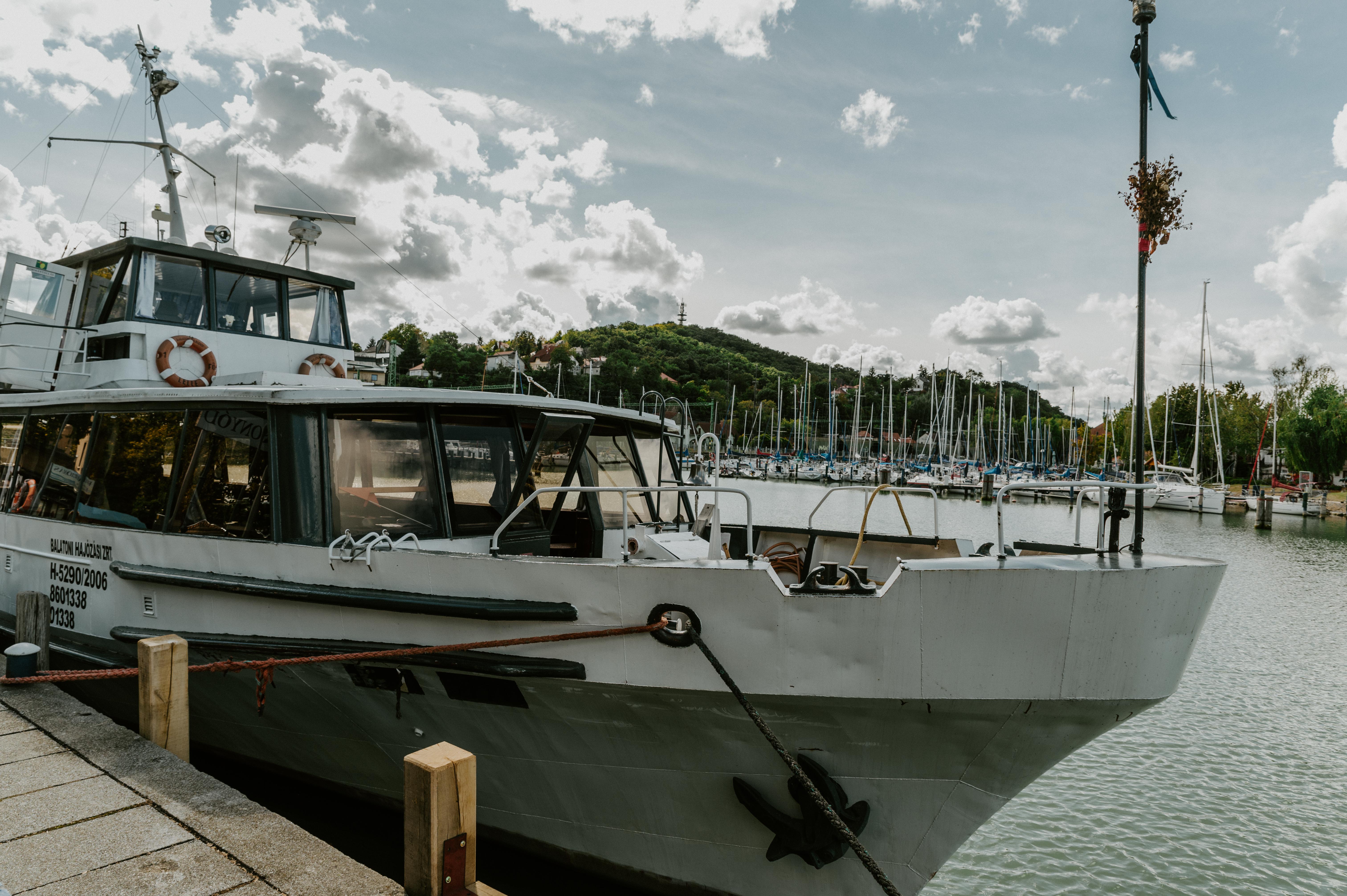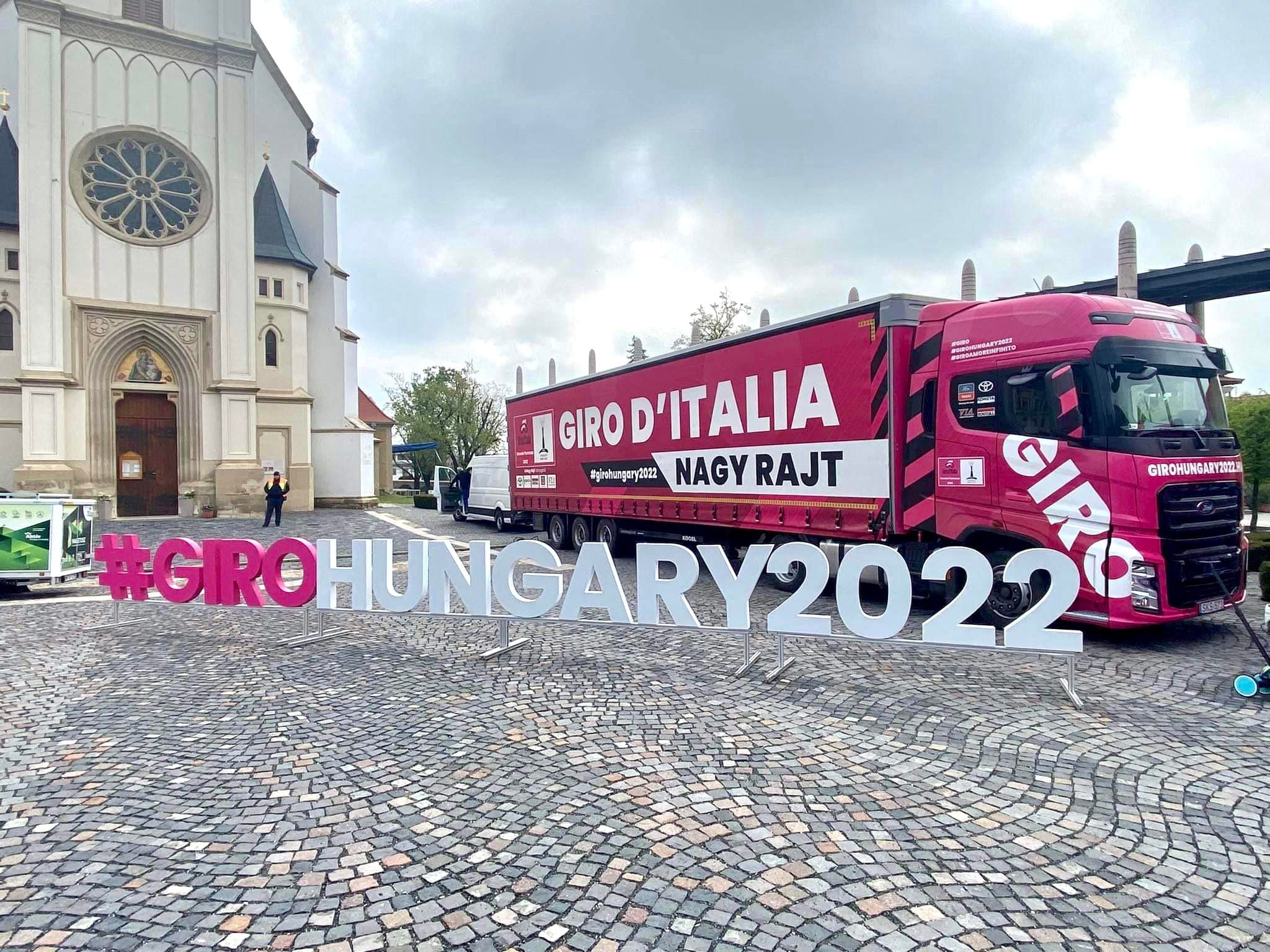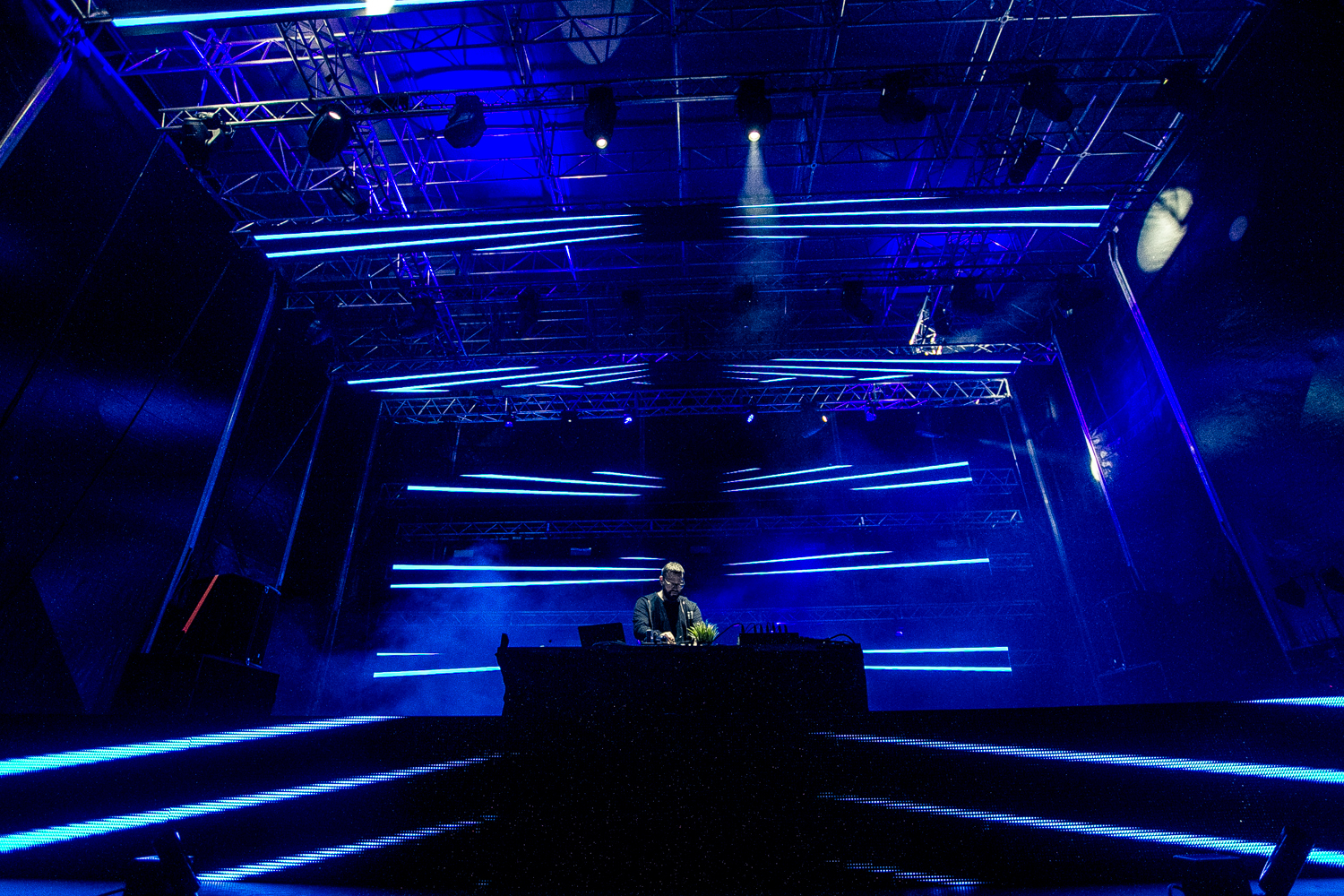We can only attempt to describe the Bugaszeg universe of János Csere. It’s easier to think of an Emir Kustarica movie, while sipping the good, quality pear pálinka Uncle János offers us upon arriving just to make sure that it has a Magyar taste to it. It might seem crazy, but there’s a system here. It’s hard to realize where we are at first glance – or at second or third. The sign says Brick Museum, but in reality, it could be so many other things.
Uncle János moved to the area between Balatonboglár and Ordacsehi in 2000, because he wanted to “leave the complications of the world behind”. Slopes, woods, and silence: his grandfather used to herd the pigs of the earl here. The three hectares of land isn't far from Balatonboglár, yet it feels like it’s half a world away from everything.
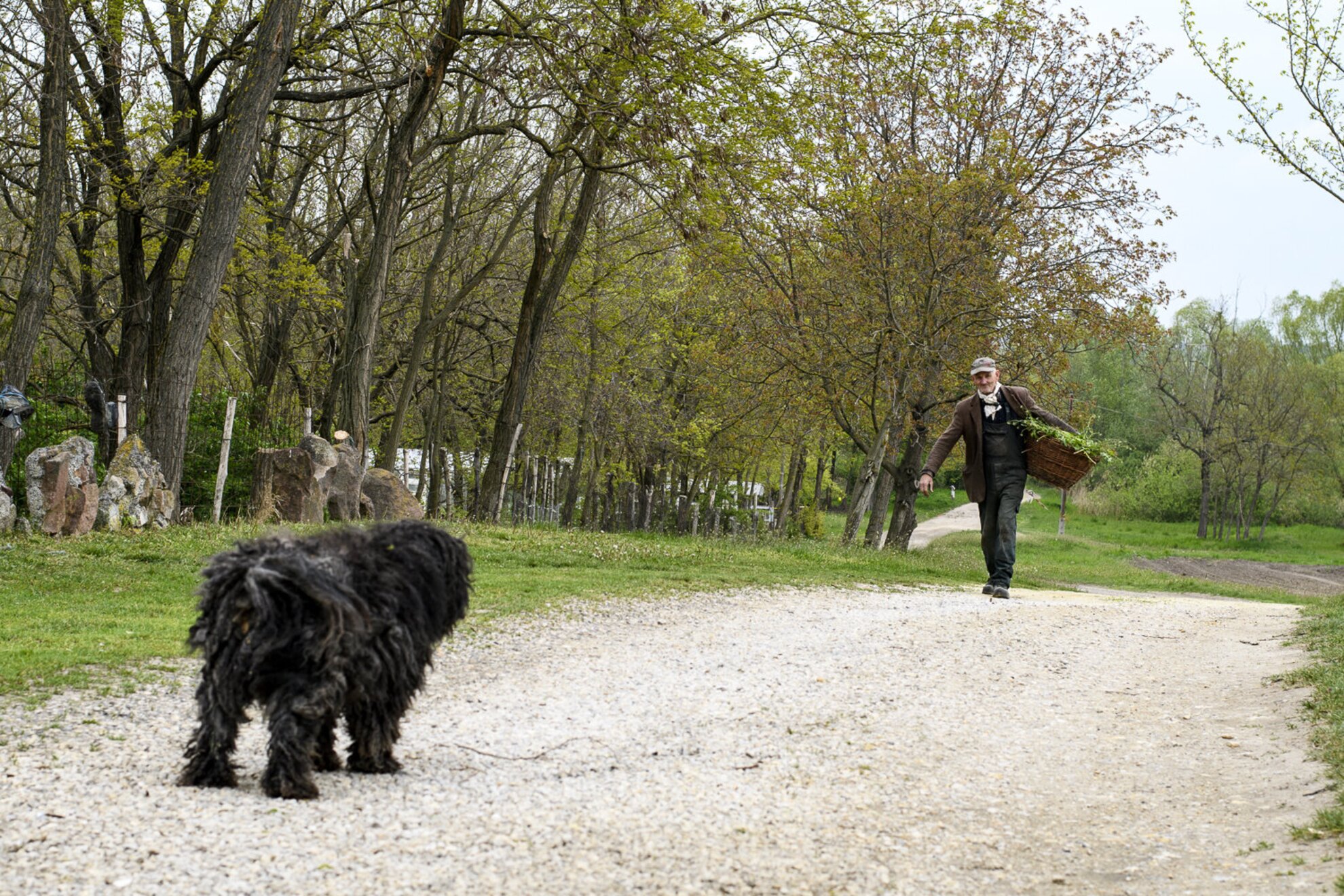
“I wanted a peaceful environment, but it didn’t work out, because more and more people come here to visit and ask more and more stupid questions. All right, I always joke about this, but I’m happy when people ask about what I’m doing, but to be here alone in my old age definitely didn’t work out. They come in summer, on weekends, on holidays, and they even have craft-camps here.”
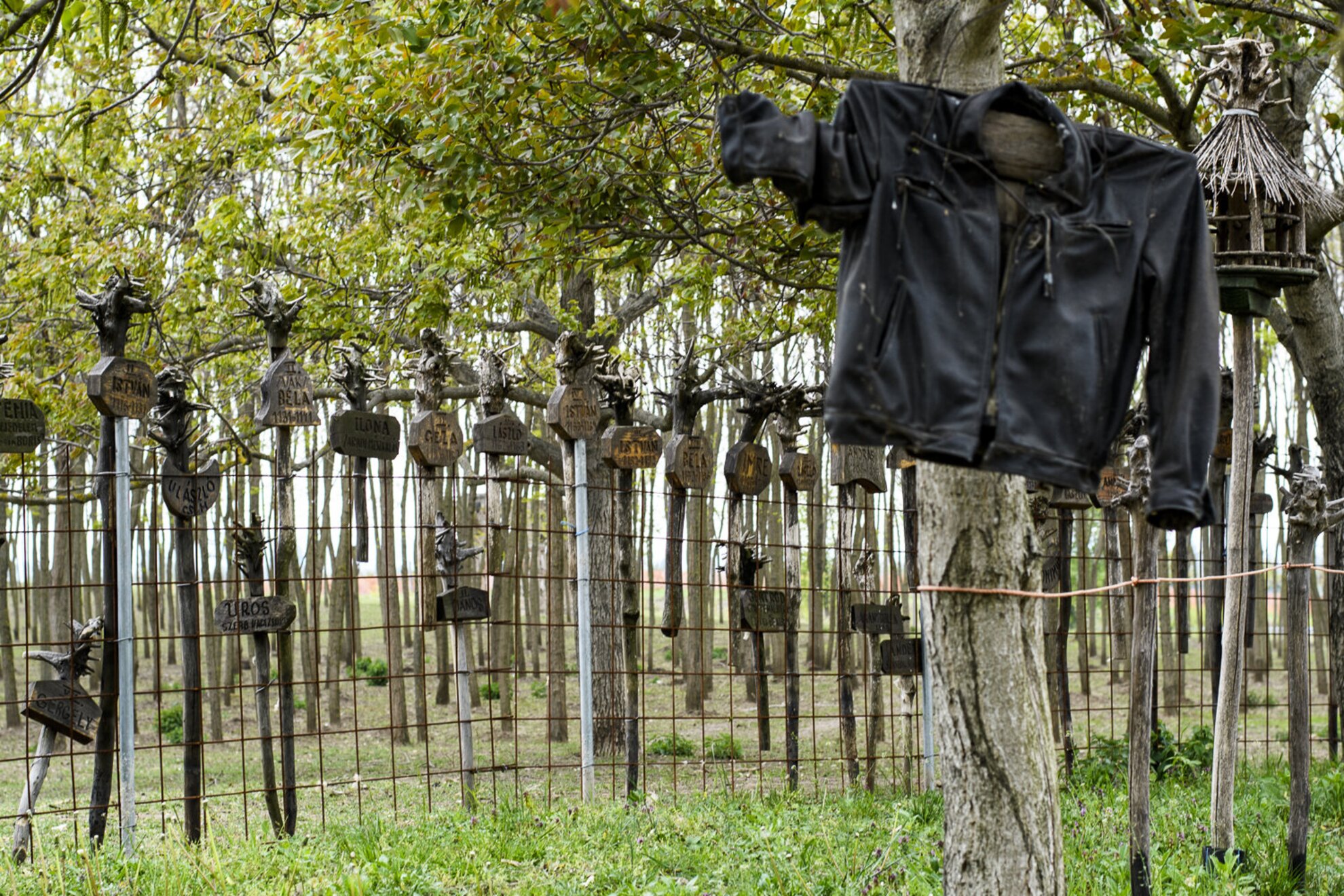
Unce János definitely didn’t expect to build a complex here. He didn’t have megalomaniac plans or vain ambitions – one brick followed the other. The Brick Museum is a three-story building with a basement, which resembles an old mansion; it all started with a buttress that was supposed to keep the crumbling hillside together. “Then I got carried away a bit” he remembers. “I made a story, then thought, why not make a gallery, too?” In the end it became a castle. He did it all alone, with his own two hands, without the help of a professional.
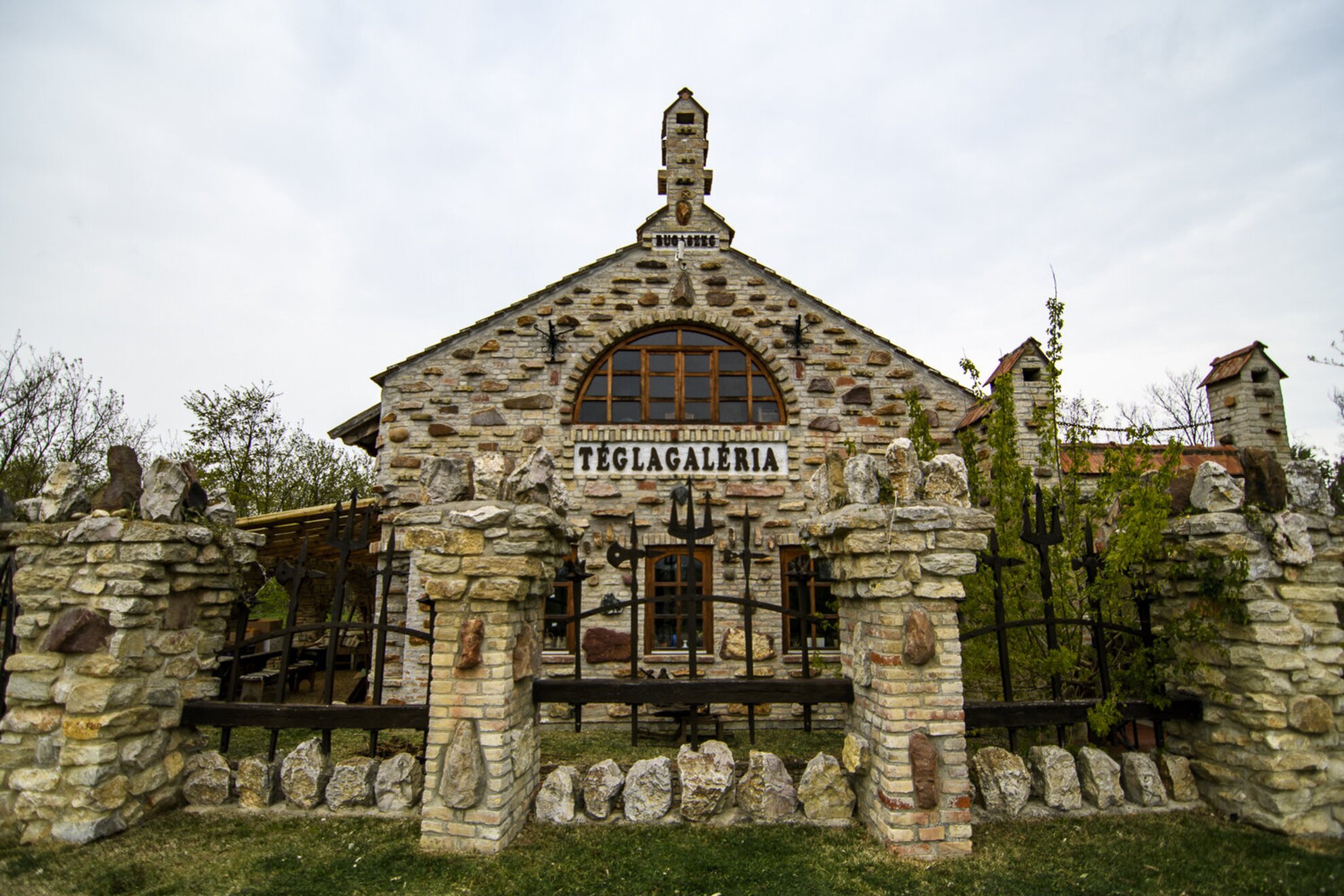
Back in the days he simply collected old, special bricks with the bills of masters or coats of arms – he got these from demolished buildings. He didn’t buy any of them, they were presents, and that’s true even today: the latest one is from a monastery from Nyitra, Slovakia. He doesn’t ask for an entrance fee (bring a brick instead), but there’s an honesty box. Sometimes it happens that the bowl is emptied by the evening, but János doesn’t complain. “99 percent of people are decent. That 1 percent does a lot of harm, but you have to live with it.”
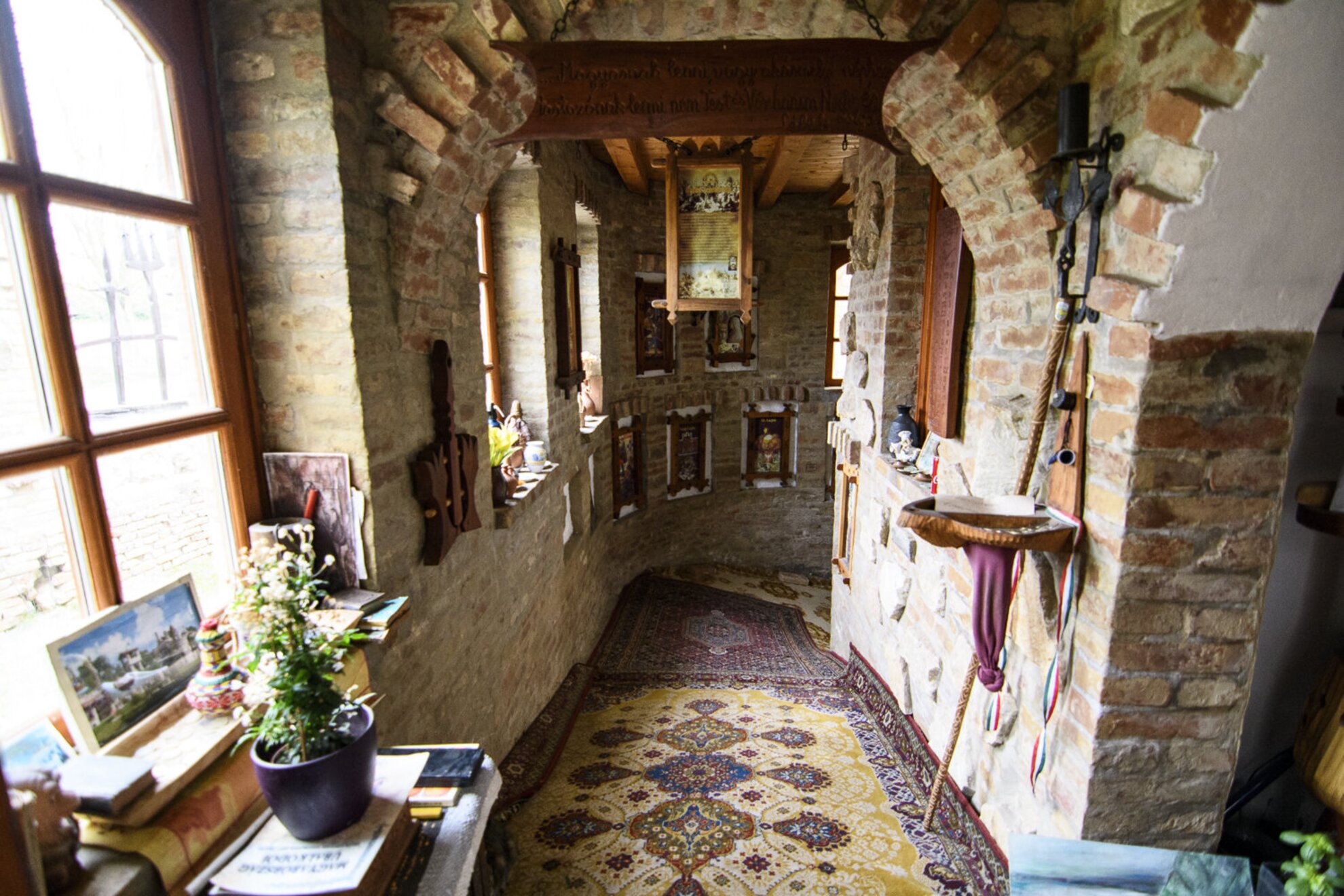
There’s an eclectic collection of antiques in the banquet hall. It’s impossible to list all the things he gathered during the years, there’s something in every little nook, in every corner. The enormous table, the chairs, the chandelier, the candlesticks, and the iron bars protecting the window were all made by Uncle János.
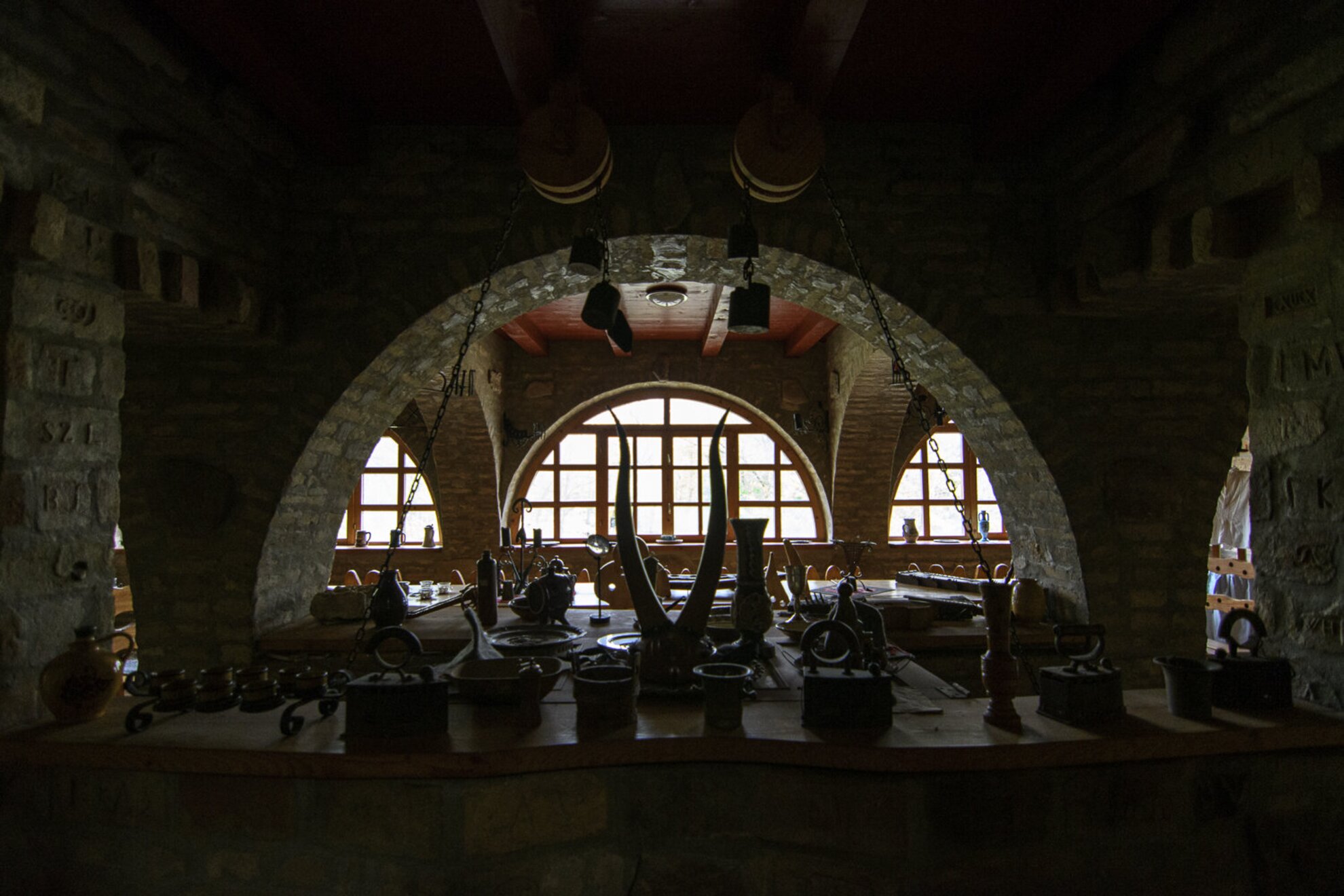
Uncle János is 69 years old, but he doesn’t stop, not even for a second. He was building a presidential palace (after all, this is the Republic of Bugaszeg) while we walked around the brick museum. The pictures of historic figures hang on the wall, and there are books everywhere, and some more books here and there – the oldest is from 1800. Sartre, Nietzsche, Attila József, Freud’s dream interpretation, philosophy, literature, and endless volumes on history, guidebooks, pulp fiction, and periodicals – some of them have a historic meaning as well, like the Népsport magazine of October 23, 1956 (and all the other issues from 1956).
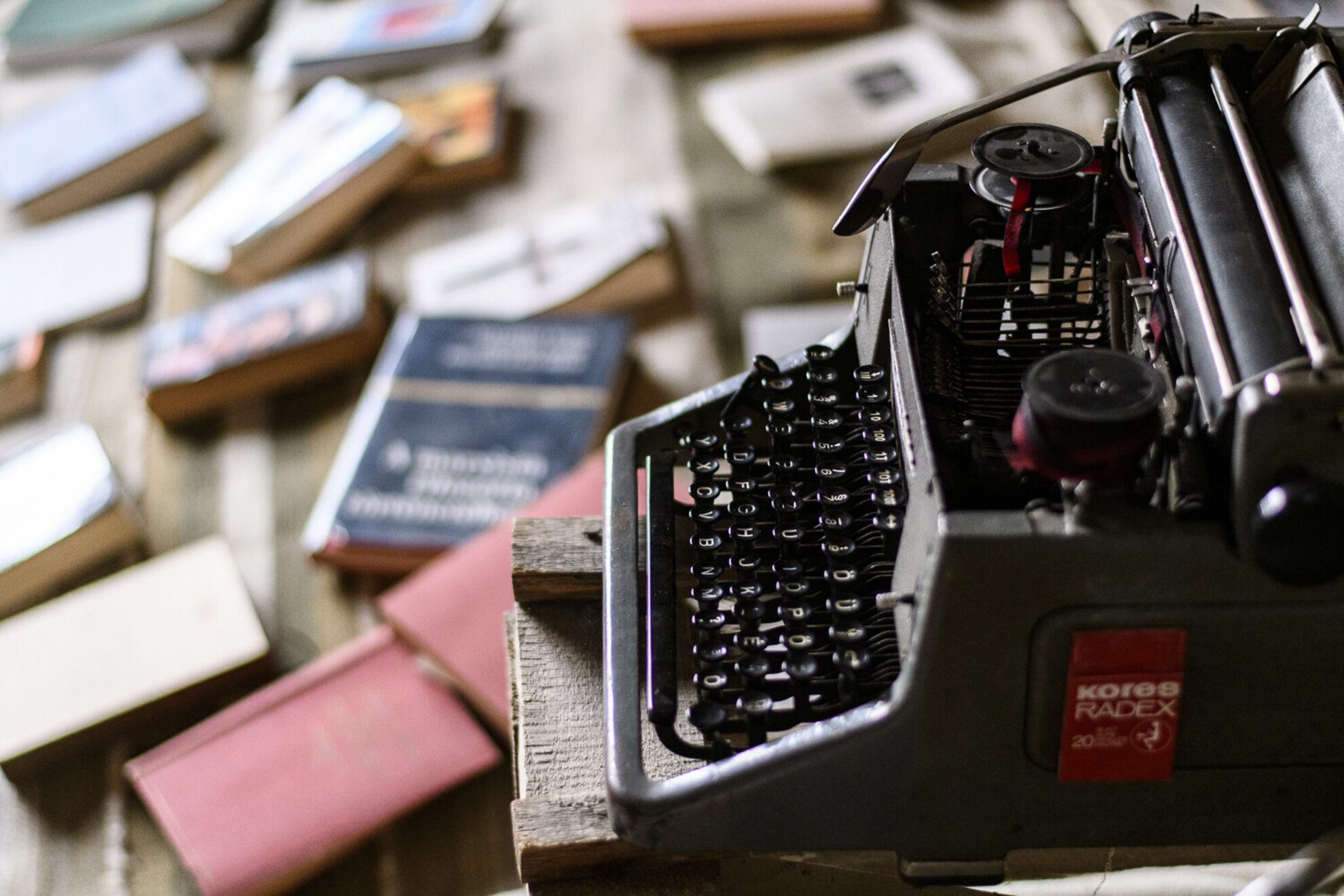
We wonder how all of this is possible. For example, how did he manage to get a granite block of almost 100 kilograms to the top of the building? The scaffolding he shows us isn’t convincing. Whenever he passes by and remembers to, he rings the Koppány memorial bell. And why is it for Koppány? “Because that’s when the Hungarians became divided” was his response.
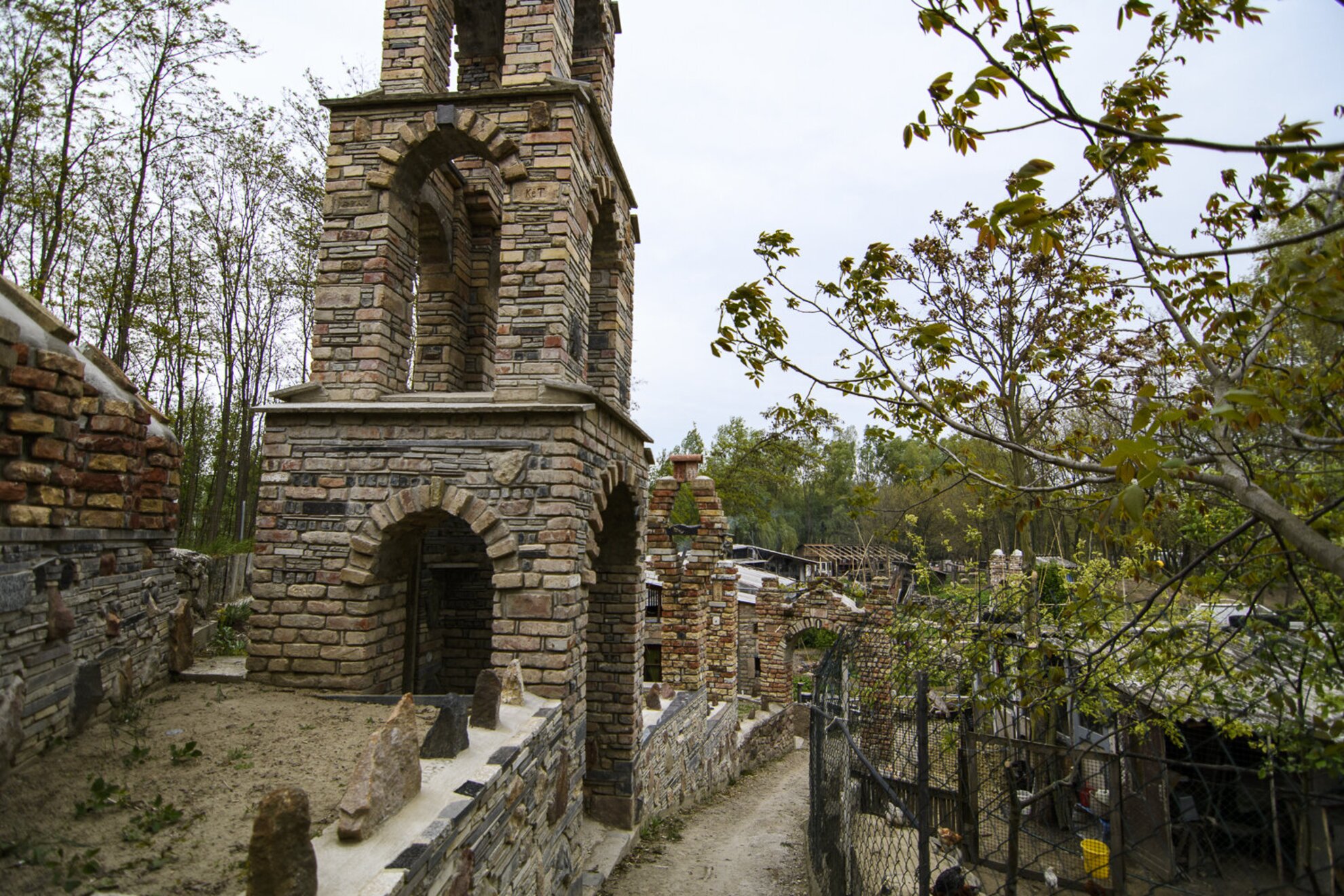
“My central lower teeth are buried here, the upper ones are here” he says as he points at the Trauma Gate (“Traumakapu”), which reminds of the most painful losses of Hungarian history. “I built them in right after they fell out. By the way, I’m waiting for them to grow again. I took a selfie in the morning, but still, they don’t want to come out. It’s old fashioned and bourgeois to look at yourself in the mirror, you see?”
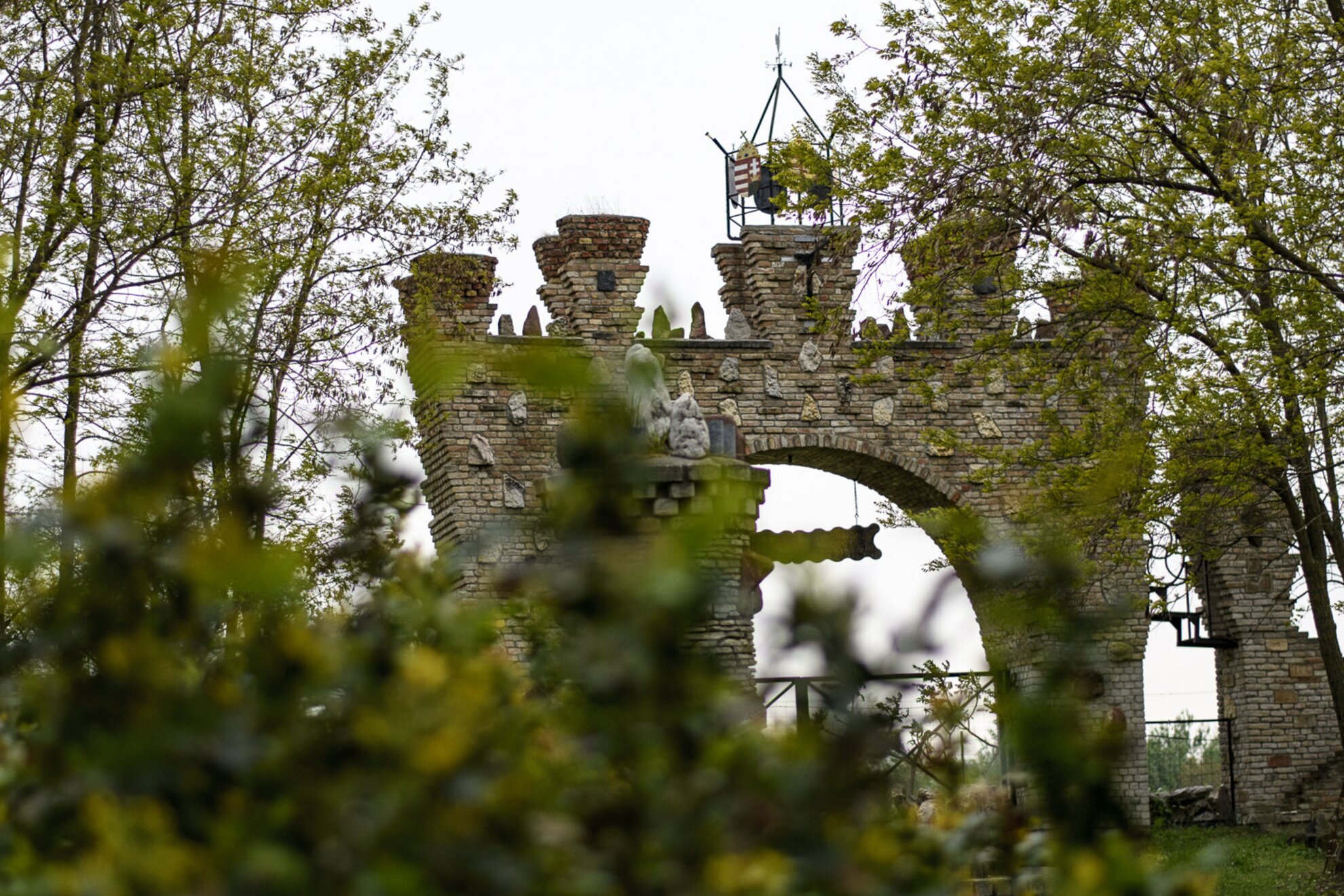
The Dead Poets Society (“Holt költők társasága”) commemorates the greatest figures of world literature and Hungarian literature, the Way of Hungarians (“Magyarok útja”) evokes important figures of Hungarian history – both of these look the same: a single row of many acacia wood sticks under the trees, just like in a cemetery. However, the main attraction for us is Uncle János.
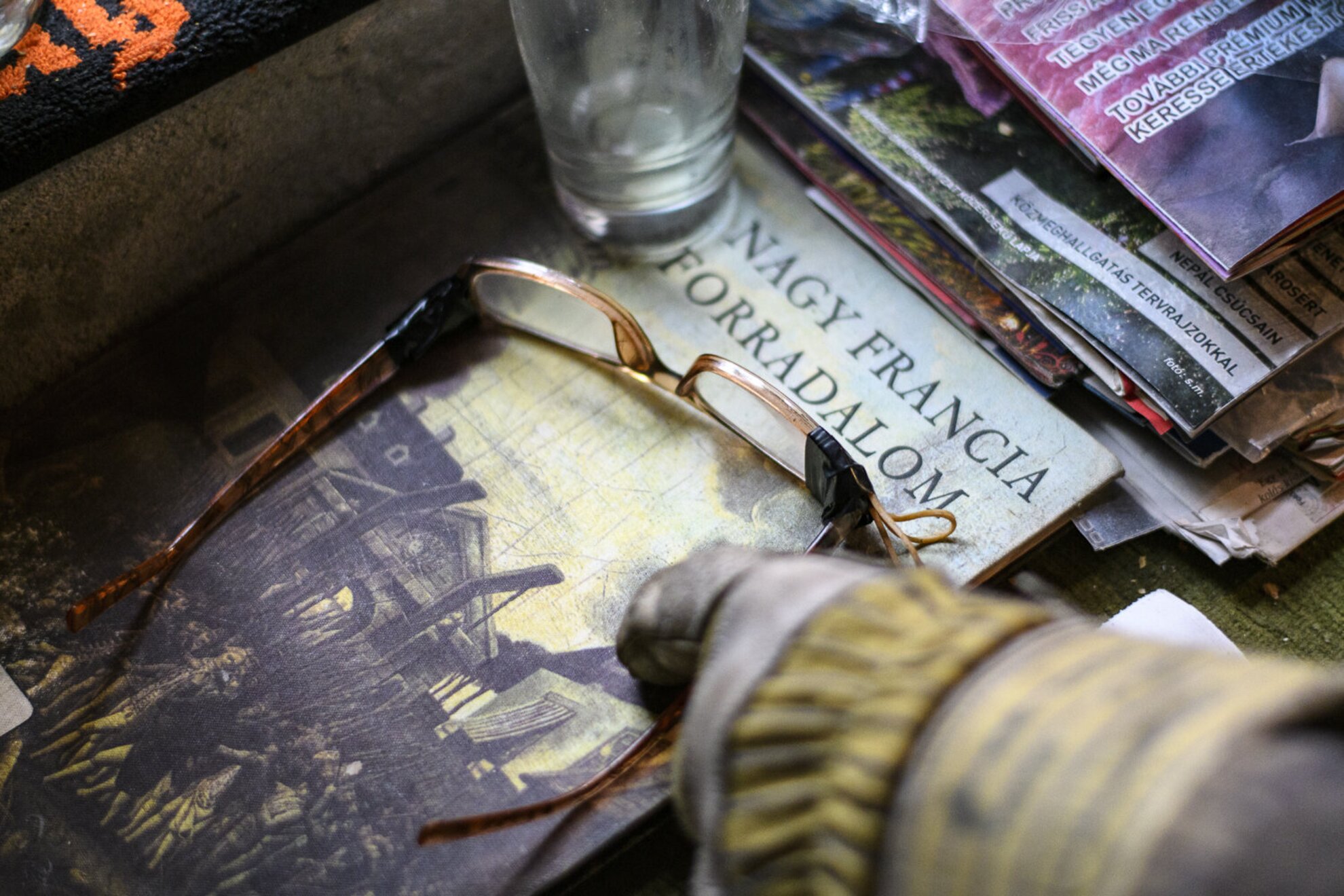
His memory is unbelievable; he is a walking history book. His passion has a rational reason: through history he wants to understand why things work the way they do nowadays. That day he read about the French Revolution for breakfast (“I got it at the market”), he read every book of Miklós Vámos in winter, and “I know Rudolf Steiner’s Fifth Gospel by heart”. His sentences are constantly filled with literary and philosophical references, and then he starts speaking in German.
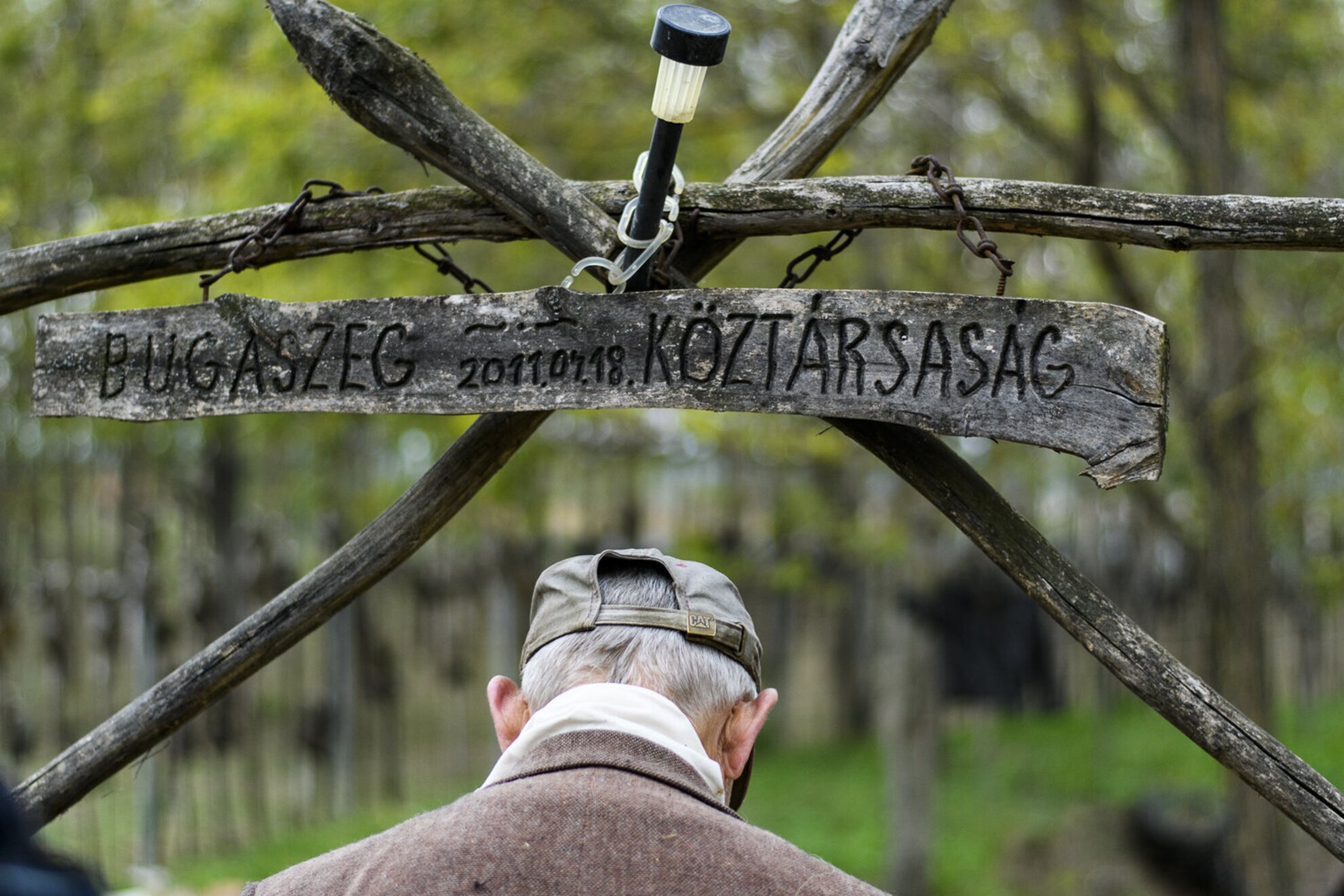
“My parents were simple peasants with a common sense, they weren’t intellectuals. I taught myself how to play cymbals, violin, piano, I can’t even read sheet music.” He’s a trained viticulturist and winemaker, and since he was good with plants and people, he became the gardener of Balatonboglár. “Then I became more independent, I built a ‘chicken coop’: we started it and it became an inn. We stopped after we were robbed several times.”
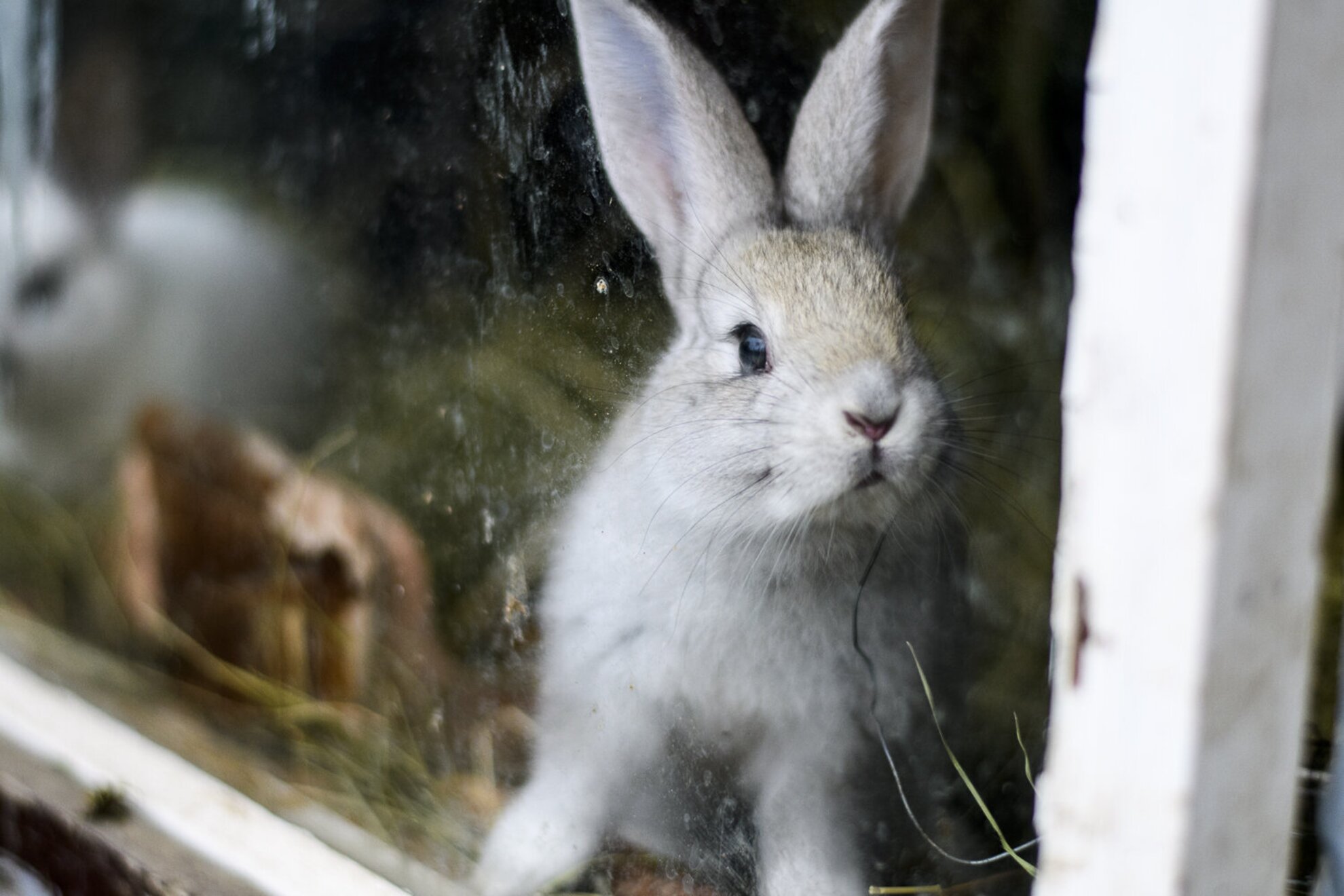
Now the sign Csere Csárda (“Csere Inn”) is above the barn of the mangalica piglets. He also keeps horses, sheep, rabbits, and hens. We walk toward the heaven on Earth, the Gecsemáné Garden; according to the sign, “almost every known Hungarian vegetable and fruit grows here, from olive trees and green peas to poppies.”
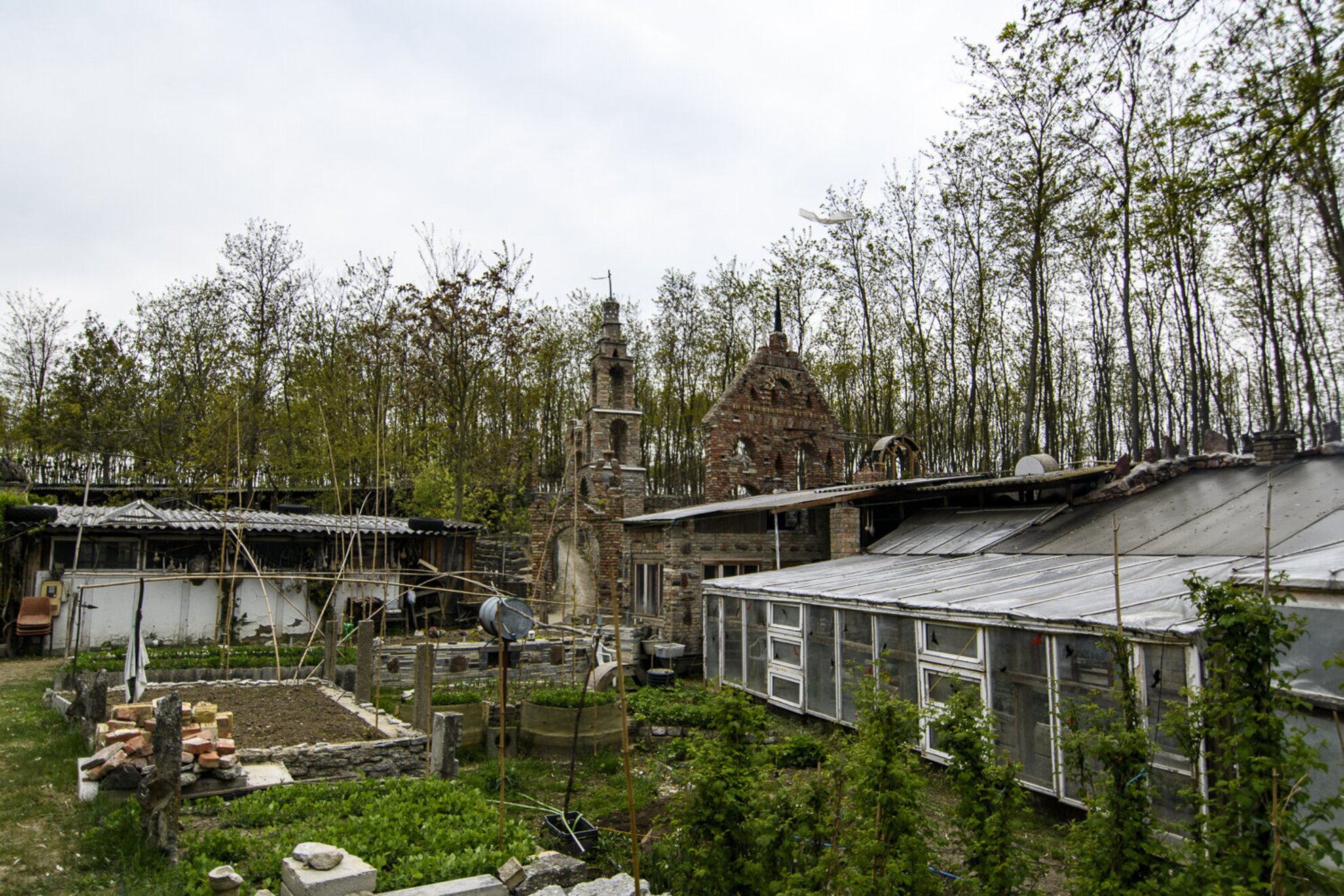
We checked out the green houses. The sign on the door says "Boglárka Group" – it got here from a kindergarten renovation. It’s a very suitable sign since there’re paprika and tomato seedlings growing in the furnace-generated warmth inside. According to Uncle János, the best lecsó (a vegetable stew) is made from the paprika of Bugaszeg. The small portable radio plays divine organ music for the seedlings. Uncle János feeds vegetables with classical music.
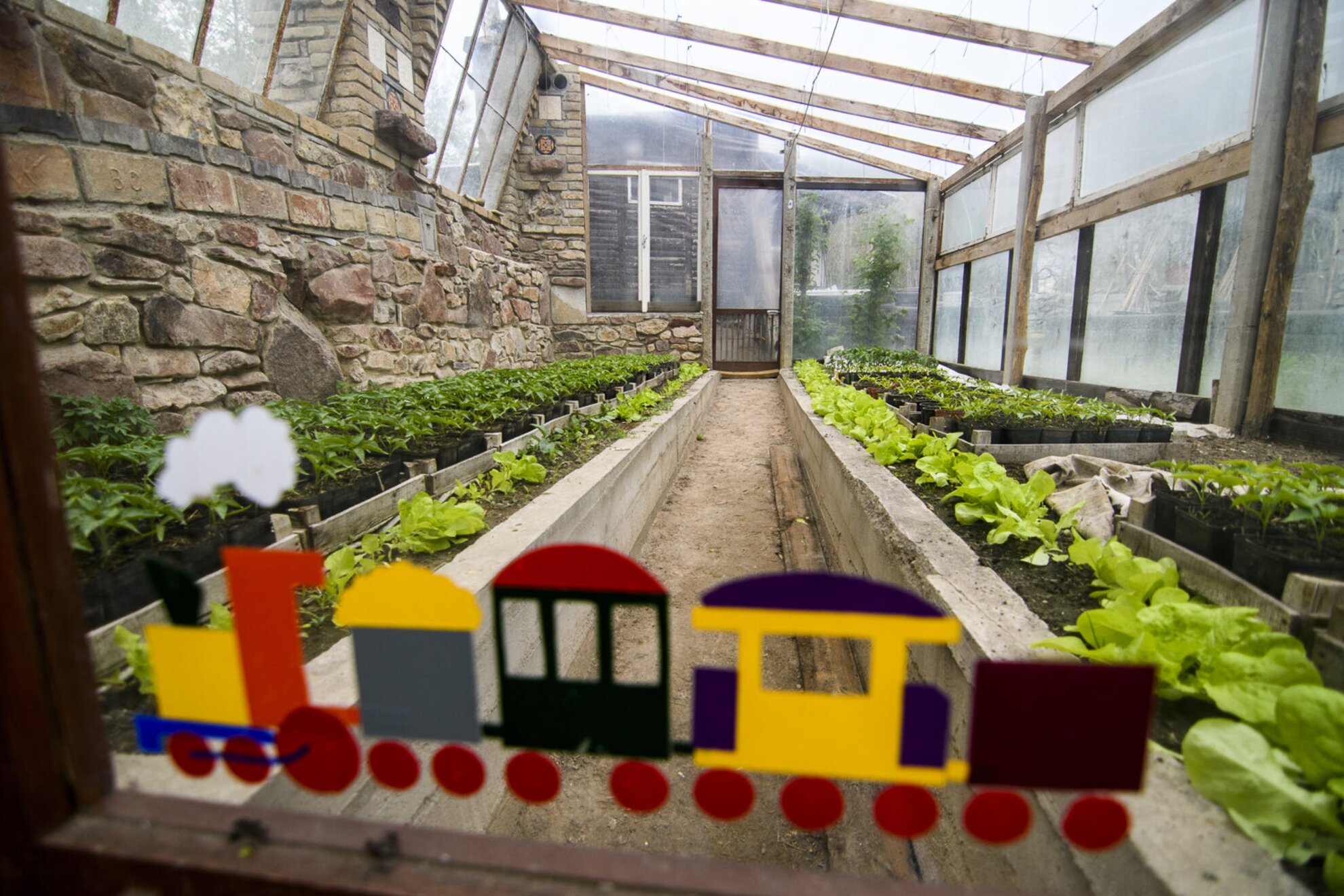
There’s something strange in every corner. Plants grow in old washbasins, there’s a small destruction derby in the garden – the frames of an old stream excavating machine and a reed combine harvester are there. And still, it doesn’t feel like chaos or disorder – maybe this is what freedom looks like. It definitely is for Uncle János. He gives the finger to the world, and meanwhile he’s laughing at himself the hardest.
Translated by Emma Póli
